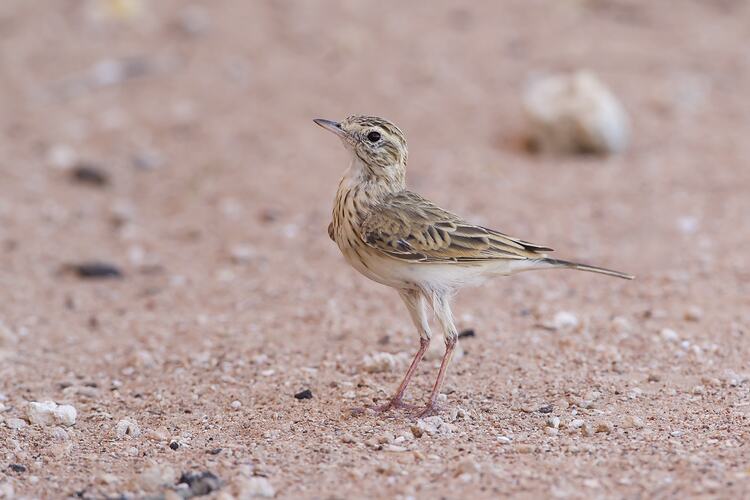General Description
Well-camouflaged, brown ground-dwelling bird, with darker brown streaks above and pale creamy white stripes on the eyebrows and below the cheeks. Underparts are creamy white, spotted and streaked dark on the breast. Wings and tail are dark brown, with the outermost tail feathers white. Bill and feet are pale pink-grey. Body length up to 18 cm.
Biology
The Australasian Pipit's diet consists of insects and their larvae, as well as seeds. It forages in a jerky, darting motion, stopping to perch on low stones or shrubs, wagging its tail up and down. Breeding pairs are formed after an elaborate courtship ritual, with males making swooping dives from a height, accompanied by a sweet trilling song. The nest is a depression in the ground, sometimes sheltered by a grass tussock, stone or piece of wood, and lined with grasses and hairs. The female incubates the eggs and feeds the young.
Distribution
Across Australia.
Habitat
Open country, in a range of habitat types from saltmarshes to dry shrublands and open woodland clearings.
More Information
-
Animal Type
-
Animal SubType
-
Brief Id
Well-camouflaged, brown, ground-dwelling bird with pale pink/grey bill and feet.
-
Colours
Brown
-
Maximum Size
18 cm
-
Habitats
-
Diet
Insects
-
Diet Categories
Insects, Seeds
-
Endemicity
-
Commercial
No
-
Conservation Statuses
CITES: Not listed, FFG Threatened List: Not listed, EPBC Act 1999: Not listed, IUCN Red List: Least Concern
-
Taxon Name
-
Scientific Author
(Gmelin, 1789)
-
Common Name
Australasian Pipit
-
Other Names
Richard's Pipit
-
Kingdom
-
Phylum
-
Subphylum
-
Class
-
Order
-
Family
-
Genus
-
Species Name
novaeseelandiae





